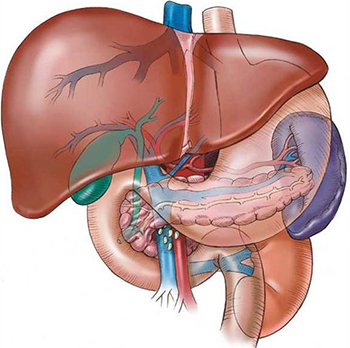BACKGROUND
Hepatitis is a general term meaning inflammation of the liver and can be caused by a variety of different viruses such as hepatitis A, B, C, D and E.
Hepatitis D, also known as the hepatitis delta virus, is an infection that causes the liver to become inflamed. This swelling can impair liver function and cause long-term liver problems, including liver scarring and cancer. The condition is caused by the hepatitis D virus (HDV). Unlike the other forms, hepatitis D can’t be contracted on its own. It can only infect people who are already infected with hepatitis B.
DISEASE OCCURRENCE IN POPULATION
Available data suggest that approximately 15 to 20 million of the 257 million HBV carriers worldwide may be infected with HDV.
The prevalence of HDV infection among HBV carriers in Asia is quite variable. Although low in Japan, other countries, especially Mongolia and those in Central Asia, are heavily affected, and the prevalence among HBV carriers can be as high as 60 percent in some areas in Pakistan.

RISK FACTORS
Once you have hepatitis D, you can infect others even before your symptoms appear. However, you can only contract hepatitis D if you already have hepatitis B. You may develop hepatitis D at the same time you contract hepatitis B.
You’re at an increased risk of getting hepatitis D if you:
- Have hepatitis B
- Are a man who has sex with other men
- Often receive blood transfusions
- Use injectable or intravenous (IV) drugs, such as heroin
SIGN AND SYMPTOMS
Hepatitis D is contagious and spread through direct contact with the bodily fluids of an infected person. It can be transmitted through:
- Urine
- Vaginal fluids
- Semen
- Blood
- Birth (from mother to her newborn)
Hepatitis D is contagious and spread through direct contact with the bodily fluids of an infected person. It can be transmitted through:
- Urine
- Vaginal fluids
- Semen
- Blood
- Birth (from mother to her newborn)
The symptoms of hepatitis B and hepatitis D are similar, so it can be difficult to determine which disease is causing your symptoms. In some cases, hepatitis D can make the symptoms of hepatitis B worse. It can also cause symptoms in people who have hepatitis B but who never had symptoms.
DIAGNOSTIC TESTS
To make an accurate diagnosis, your doctor will perform a blood test that can detect anti-hepatitis D antibodies in your blood. If antibodies are found, it means you’ve been exposed to the virus.
Your doctor will also give you a liver function test if they suspect you have liver damage. This is a blood test that evaluates the health of your liver by measuring the levels of proteins, liver enzymes, and bilirubin in your blood. Results from the liver function test will show whether your liver is stressed or damaged.
TREATMENT OPTIONS
You may be given large doses of a medication called interferon for up to 12 months. Interferon is a type of protein that may stop the virus from spreading and lead to remission from the disease. However, even after treatment, people with hepatitis D can still test positive for the virus. This means that it’s still important to use precautionary measures to prevent transmission.
If you have cirrhosis or another type of liver damage, you may need a liver transplant. A liver transplant is a major surgical operation that involves removing the damaged liver and replacing it with a healthy liver from a donor. In cases where a liver transplant is needed, approximately 70 percent of people live 5 years or longer after the operation.
PRECAUTIONS
The only known way to prevent hepatitis D is to avoid infection with hepatitis B. You can take the following preventive measures to reduce your risk for hepatitis B:
Get vaccinated: There’s a vaccine for hepatitis B that all children should receive. Adults who are at high risk for infection, such as those who use intravenous drugs, should also be vaccinated. The vaccination is usually given in a series of three injections over a period of six months.
Avoid or stop using recreational drugs: that can be injected, such as heroin or cocaine. If you’re unable to stop using drugs, make sure to use a sterile needle each time you inject them. Never share needles with other people.
Use protection: Always practice safe sex by using a condom with all of your sexual partners. You should never engage in unprotected sex unless you’re certain your partner isn’t infected with hepatitis or any other sexually transmitted infection.
Be cautious about tattoos and piercings: Go to a trustworthy shop whenever you get a piercing or tattoo. Ask how the equipment is cleaned and make sure the employees use sterile needles.
REFERENCES
Wedemeyer H, Manns MP. Epidemiology, pathogenesis and management of hepatitis D:
Update and challenges ahead. Nat Rev Gastroenterol Hepatol 2010; 7:31.
World Health Organization. Global Hepatitis Report, 2017.
World Health Organization
(Accessed on November 27, 2018).
Rizzetto M, Ponzetto A, Forzani I. Epidemiology of hepatitis delta virus:
Overview. Prog Clin Biol Res 1991; 364:1.
Abbas Z, Jafri W, Raza S. Hepatitis D:
Scenario in the Asia-Pacific region. World J Gastroenterol 2010; 16:554.
